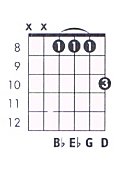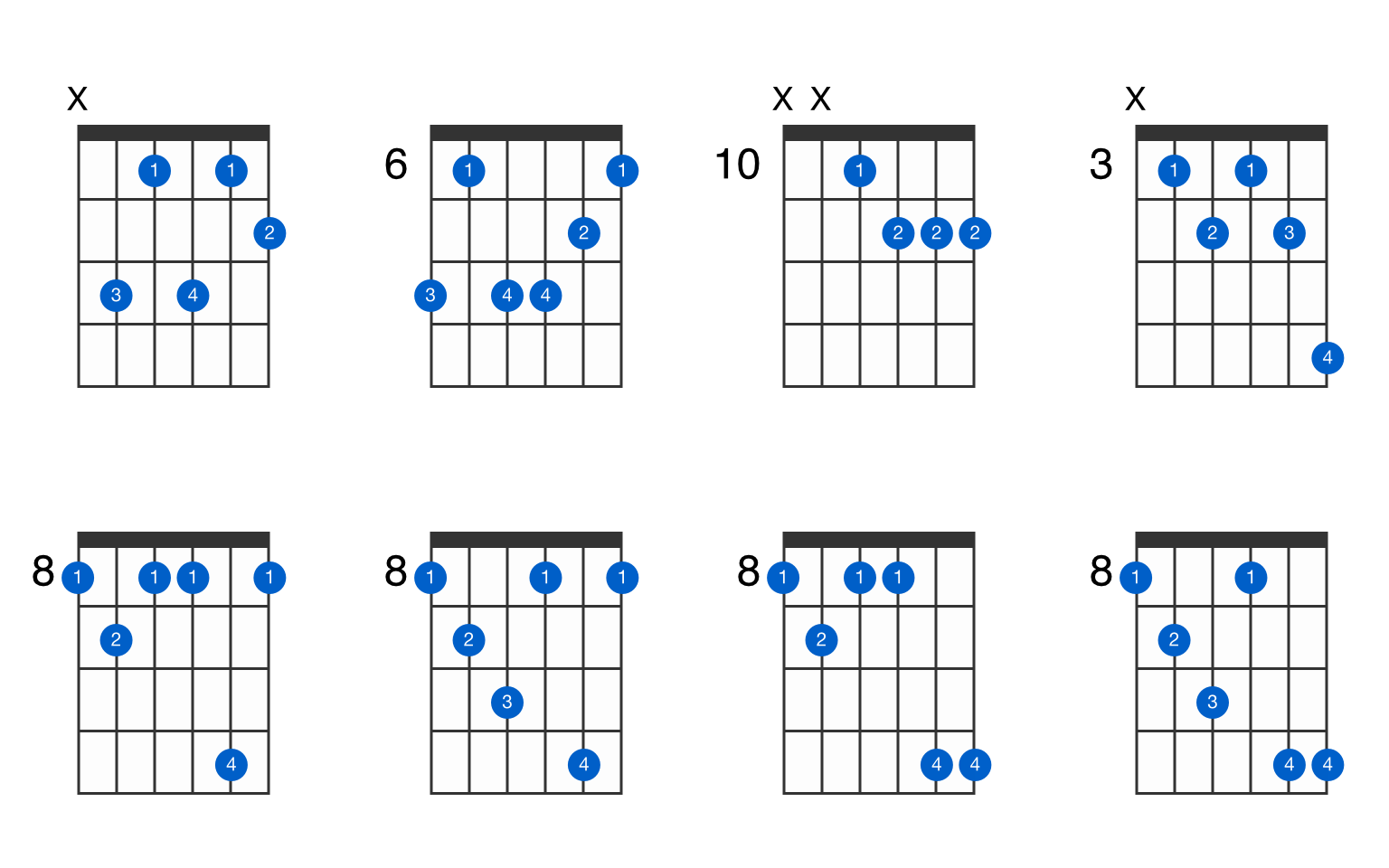
Minor sixth chords have an expectant quality and work well after a minor seventh chord. It may seem contradictory, but a minor sixth chord is produced by adding the major sixth to a minor chord.

Here, we’ve slipped finger four down one fret to the note F sharp, which is the major sixth interval above A. Where there is a minor seventh, the minor sixth can’t be far away.

Switching between A minor and this voicing of A minor seven creates melodic interest and adds movement at the top of the chord, as can be heard in that most obscure of Led Zeppelin songs, Stairway to Heaven. Here, we’ve taken the minor seventh up an octave to a more prominent position at the top of the chord. Try recording a loop on Am7 and D7 and playing a Santana style solo using an A blues scale. Minor sevenths seem more mellow than the plain minor chord, with a hint of jazzy ambiguity. Removing finger three from the basic chord introduces the open G string, the minor seventh, and produces an A minor seven chord. You could also play the last three examples and sound the open A string, although technically they would then all be in root position. This would be the same as if you played the top four strings of the open chord, figure 1, except that now we are an octave higher.
C MINOR GUITAR CHORD FULL
Figure 6Ĭompleting the full set of inversions, we now have the second inversion, with the fifth, E in the bass. When you are staying on one chord for a long time, you can make it more interesting by switching between different inversions. This is another high four-note voicing, but this time the chord is in first inversion because the note C, the minor third, is in the bass.

Chords sound strongest when in root position. When the root note of a chord is in the bass (as it is here) we say it is in “root position”. High voicings like this are useful for choppy rhythm parts and chord/melody arrangements. Here is another four-note voicing, this time focusing on the top four strings.


 0 kommentar(er)
0 kommentar(er)
